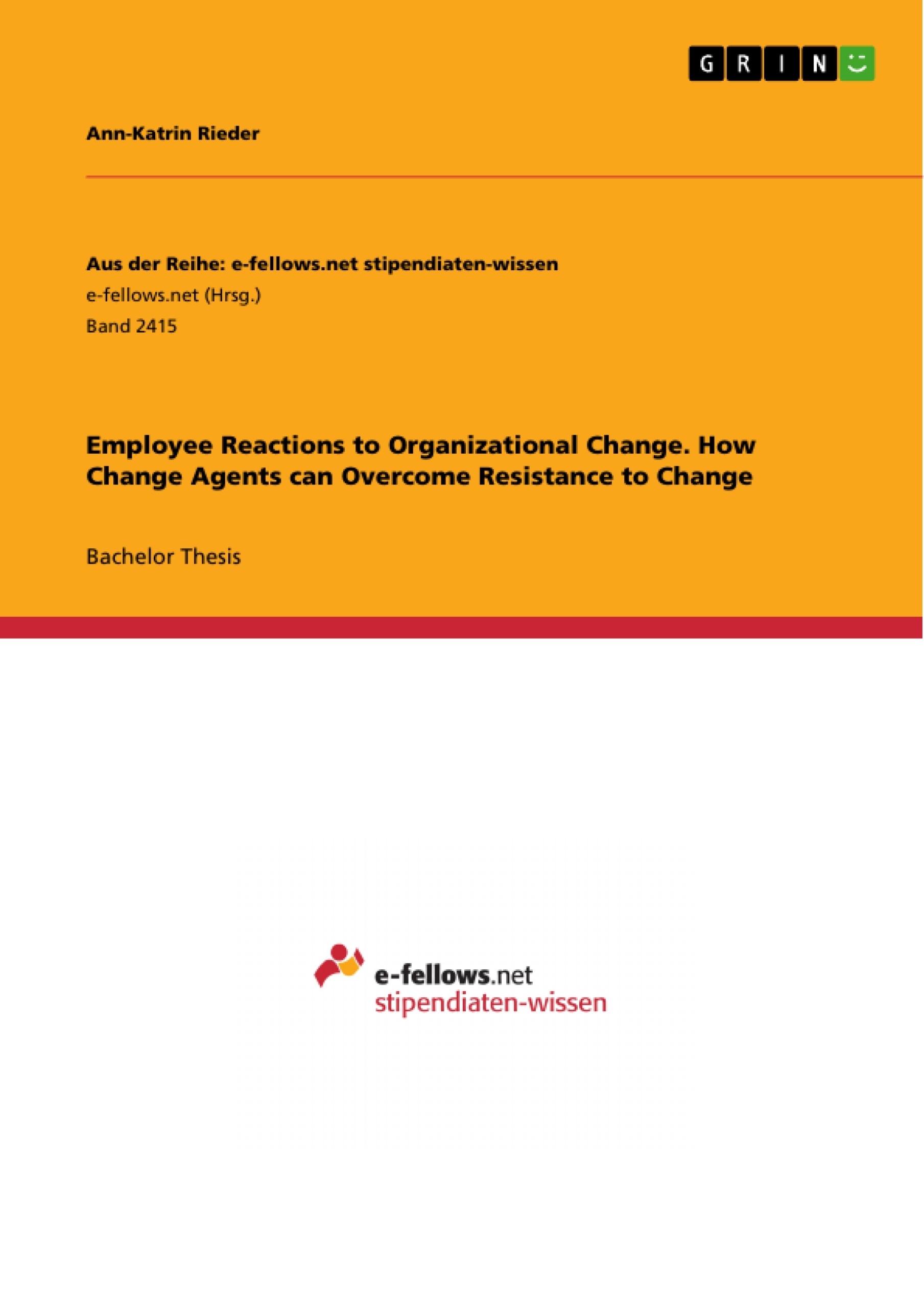Nowadays, organizations are continuously changing. Frequently, due to a changing business environment, companies are forced to rethink their strategic direction and structure in order to remain competitive. New government regulations, growth, increasing competition, changing customer needs and technological developments are only some of the causes for an organization to change. The fact that nowadays change is inevitable in organizations and that still many change initiatives fail, aroused my interest in the topic. Especially, I want to find out what happens when human variables are taken into account. The main goal of my thesis is to examine the role of a change agent. What strategies can he or she use to overcome resistance as a major employee reaction to organizational change?
Table of Contents
1 Introduction
2 Employees Reactions to an Organizational Change
3 Resistance to Change
3.1 Definitions of Resistance to Change
3.2 Reasons for Resistance to Change
3.3 Forms of Resistance to Change
3.4 Positive Aspects of Resistance to Change
4 The Role of the Change Agent in Overcoming Resistance to Change
4.1 Information Dissemination
4.2 Crafting a Vision
4.3 Participation
4.4 Providing Support
4.5 Other Strategies
5 Conclusion
References



